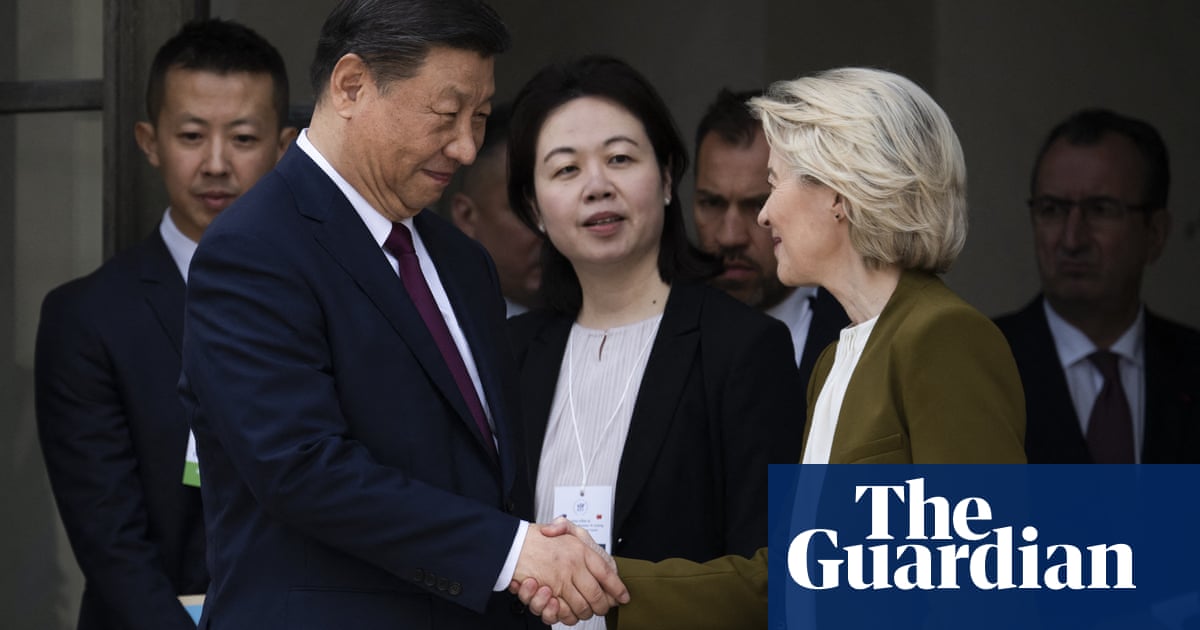- cross-posted to:
- europe@feddit.de
- cross-posted to:
- europe@feddit.de
The European Commission chief said she was “convinced that if the competition is fair” from China, then Europe “will have thriving durable economies”. But she said the “imbalances” caused by state support for Chinese industry leading to cut-cost products threatened jobs in Europe, and that was “a matter of great concern”. “Europe will not waver from making tough decisions needed to protect its economy and security,” she said.



First part: looks like that was a mistake. Decentralized manufacturing has always been the future, though.
Second part: we overcame that, didn’t we? That’s why it’s history and not currently happening like in China.
No, you don’t understand, this is actually an incredibly efficient method of producing food for retail consumption.
Perhaps we mean different things with “decentralized”. What I meant was that it’s a bad idea to outsource all your manufacturing to the part of the world where its cheaper. Keep some steel mills, auto plants and chip foundries near where they’re consumed. Food production is actually a good example of decentralized manufacturing. I buy mostly locally grown produce, I can literally take a walk and see the wheat which will someday be the bread I eat.
It’s a bad long term logistics strategy, thanks to the tail risk that comes with shifts in geopolitical relations. But its heavily incentivized from a short term profit-maximization strategy.
So, there’s some economic limit on all of these. Steel mills are voracious electricity consumers, which makes them most efficient near cheap hydroelectric or nuclear power stations. Also, steel is heavy, so you’ll want the factory near a port, for cheap shipping. Meanwhile, steel consumption is global and generally predicated on where we’re doing large construction projects. You can’t build a steel mill right next door to a city, just because its going through a construction boom.
That said, that’s not really what has happened in the modern global economy. During the 19th and early 20th centuries, our primary method of powering steel mills was through coal consumption. And that gave us a Rust Belt that ran adjacent to the Coal Belt. For decades, the D.H. Mitchell plant in Gary, Indiana was the primary power source of Gary Works, the largest steel foundry in the nation. But the rate of pollution was enormous, ultimately leading to a shut down of the plant in 2010 and half a billion dollars earmarked to help with clean up.
Thanks to high demands for domestic real estate and tighter environmental laws, we’ve exported an enormous amount of our steel production oversees and rendered some of our largest manufacturing facilities unprofitable. We effectively outsourced our pollution to our colonies (most notably, Gwangyang South Korea, the largest in the world and one of the major feeders to the Japanese automotive industry).
Also, obviously, too, cheap labor. Cheap real estate. Cheaper electricity thanks to depressed domestic consumption. We’re pivoting from Chinese exports to Indian and Indonesian exports, because these are the other countries with an enormous pools of cheap labor.
In the same vein, automotive manufacturing moved from the unionized northern midwest to the southwest and Gulf/Atlantic Coast, chasing the lower wages and weaker environmental protections common to these former plantation states.
Chip foundries are an entirely different animal, because of the sizable investment in their construction (north of $1T for a high end modern facility). You can’t just make another Taiwan Semiconductor in your backyard, unless you have hundreds of billions of dollars to throw at the project.
The US is a breadbasket, so we produce enormous surpluses. A good share of the wheat you’re seeing will never end up on your plate, or in your state, or even in your country.
If you look at the impacts of NAFTA on the Mexican agricultural industry, you’ll see what I mean. We crashed their domestic corn industry when we flooded Latin America with our cheap excess produce. And, as a result, we created an enormous demand for farm labor north of the border just as we were bankrupting local farms south of the border.